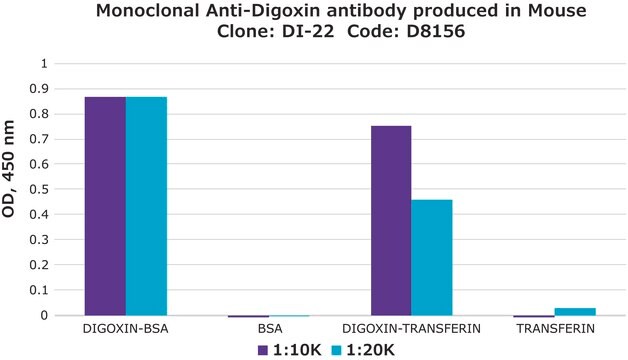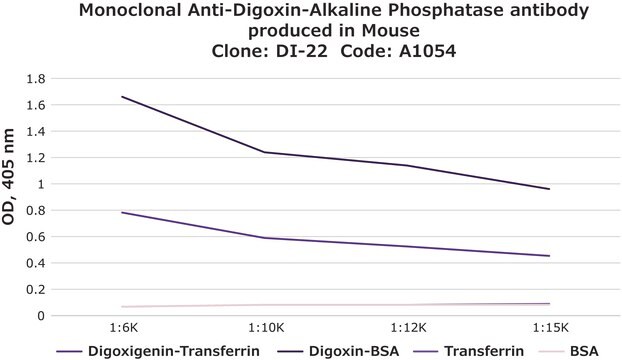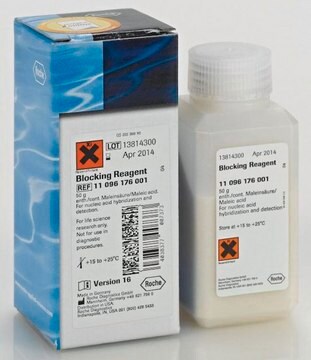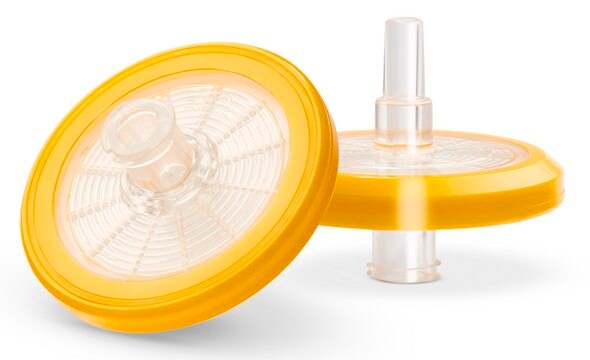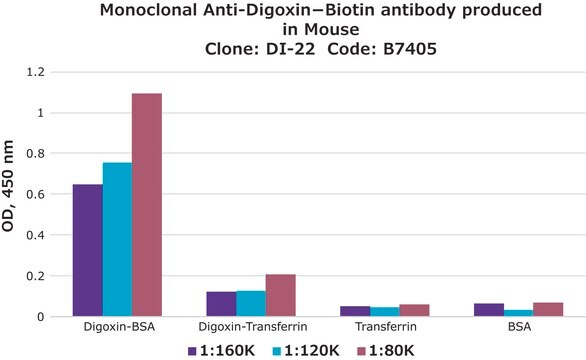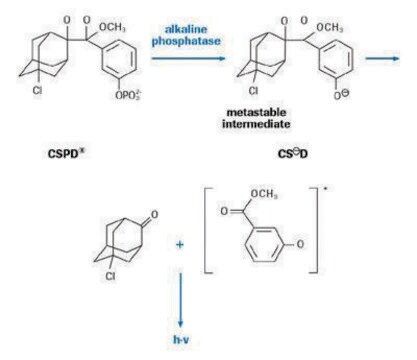11214667001
Roche
Anti-Digoxigenin, Fab fragments
from sheep
Synonyme(s) :
anti-digoxigenin, digoxigenin
About This Item
Produits recommandés
Source biologique
sheep
Niveau de qualité
Conjugué
unconjugated
Forme d'anticorps
affinity purified immunoglobulin
Type de produit anticorps
primary antibodies
Clone
polyclonal
Forme
lyophilized
Conditionnement
pkg of 1 mg
Fabricant/nom de marque
Roche
Technique(s)
ELISA: 2-4 μg/mL
immunohistochemistry: 0.5-1 μg/mL
western blot: 0.5-2 μg/mL
Isotype
IgG1
Température de stockage
2-8°C
Description générale
Spécificité
Application
Use Anti-Digoxigenin, Fab fragments for the detection of digoxigenin-labeled compounds using:
- ELISA
- Immunohistocytochemistry
- In situ hybridization
- Western blot
- Flow cell construction.
Caractéristiques et avantages
Séquence
Notes préparatoires
- ELISA: 2 to 4 μg/ml
- Immunohistocytochemistry: 0.5 to 1 μg/ml
- In situ hybridization: 0.2 to 0.4 μg/ml
- Western blot: 0.5 to 2 μg/ml
Storage conditions (working solution): Diluted antibody is stable at 2 to 8 °C for 12 hours.
Always prepare freshly!
Reconstitution
Remarque sur l'analyse
Autres remarques
Vous ne trouvez pas le bon produit ?
Essayez notre Outil de sélection de produits.
Code de la classe de stockage
11 - Combustible Solids
Classe de danger pour l'eau (WGK)
WGK 1
Point d'éclair (°F)
does not flash
Point d'éclair (°C)
does not flash
Certificats d'analyse (COA)
Recherchez un Certificats d'analyse (COA) en saisissant le numéro de lot du produit. Les numéros de lot figurent sur l'étiquette du produit après les mots "Lot" ou "Batch".
Déjà en possession de ce produit ?
Retrouvez la documentation relative aux produits que vous avez récemment achetés dans la Bibliothèque de documents.
Les clients ont également consulté
Articles
Digoxigenin (DIG) labeling methods and kits for DNA and RNA DIG probes, random primed DNA labeling, nick translation labeling, 5’ and 3’ oligonucleotide end-labeling.
Notre équipe de scientifiques dispose d'une expérience dans tous les secteurs de la recherche, notamment en sciences de la vie, science des matériaux, synthèse chimique, chromatographie, analyse et dans de nombreux autres domaines..
Contacter notre Service technique

